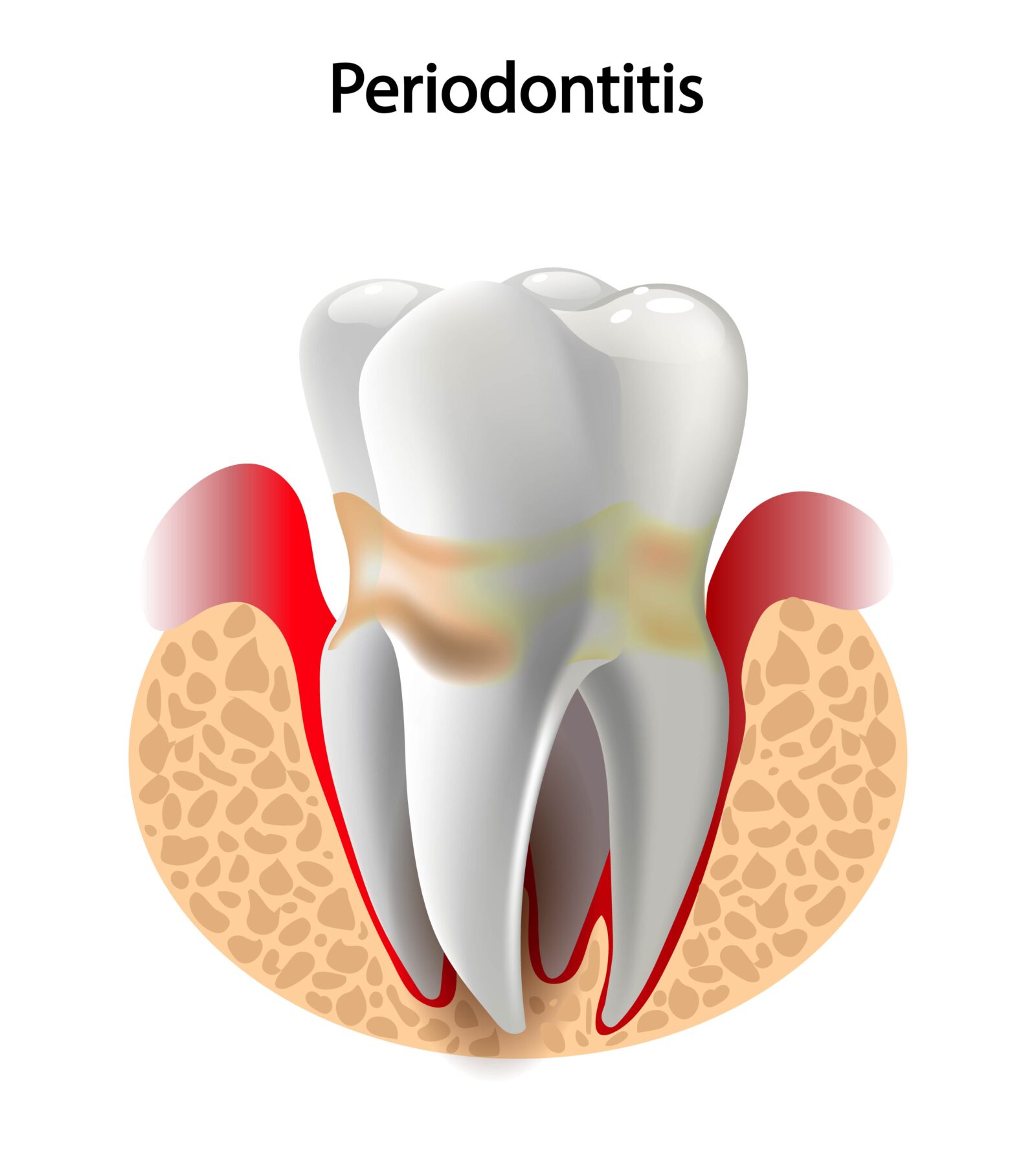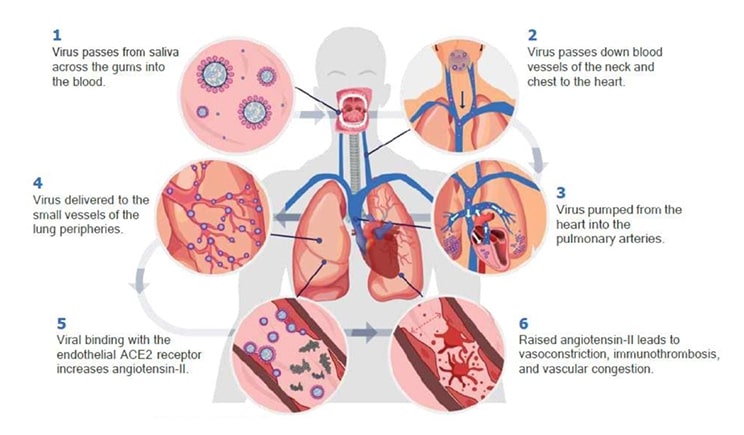At the start of the pandemic, very little was known about the novel coronavirus responsible for causing the COVID-19 illness. Over the duration of the pandemic, however, researchers slowly started to learn more and more about this virus, how it is transmitted, and how it affects the body. Currently, the theory is that the SARS-CoV-2 virus is transmitted through the air via respiratory droplets, where it is then inhaled through the upper respiratory system to reach the lungs.
However, some researchers believe that the SARS-CoV-2 virus is not actually delivered to the lungs through the upper respiratory system, but through the bloodstream. In their article, “The COVID-19 Pathway: A Proposed Oral-Vascular-Pulmonary Route of SARS-CoV-2 Infection and the Importance of Oral Healthcare Measures”, researchers postulate that the virus collects in the mouth, then passes through the bloodstream to infect the lungs. This article also proposes that oral hygiene should be used as a way to minimize the severity of COVID-19 infections.
The article begins by first addressing some shortcomings on the theory that the SARS-CoV-2 virus reaches the lungs via the upper respiratory system. To start, researchers note that the majority of COVID-19 infections start in the upper airway and not the lungs. They continue by noting the fact that the way COVID-19 lung disease affects the lungs is not consistent with that of an inhaled pathogen. Specifically, inhaled pathogens are uniformly distributed throughout the lungs, while COVID lung disease tends to localize around the base of the lungs.

Once researchers have thoroughly explained why they do not believe the SARS-Cov-2 virus enters the lungs through inhalation, they then begin to provide their theory that the virus actually enters through the mouth. The article notes that there are abundant amounts of key elements that allow for COVID infection within the mouth, such as the gingival tissue, minor salivary glands, and tongue. Simply stated, this means that the virus can accumulate in these areas.
Additionally, the virus has also been found to collect in gingival crevicular fluid (GCF). GCF is produced as a result of inflammation due to gum disease. Generally speaking, people with healthy gums have very low levels of GCF, while those with periodontitis have much higher levels. An outside study quoted by the article notes that SARS-CoV-2 RNA was found in the GCF in 64% of COVID-19 positive patients.
In addition to having higher amounts of GCF, people with periodontitis also tend to have periodontal pockets. Periodontal pockets are small gaps that form between the gums and tooth roots once the gums have receded from the teeth. Unfortunately, these pockets tend to accumulate excess plaque and bacteria that can make gum disease worse. Since these pockets also contain GCF, the article notes that they provide an ideal environment for viral replication of the SARS-CoV-2 virus.

When the bacteria responsible for causing gum disease accumulates in the periodontal pockets, it can eventually overwhelm the mouth’s defense system and pass into the bloodstream. This is why severe gum disease has been associated with bodily conditions such as endocarditis, respiratory infections, and pregnancy complications. The article proposes that the SARS-Cov-2 virus can also enter the bloodstream in the same way. Once in the bloodstream, the virus will then travel through the veins in the face, neck, and chest to reach the heart, then the heart will pump the virus to the lungs where it will be distributed to the various small vessels around the lungs.
The article also notes that once infected with COVID-19, patients with periodontitis have a higher rate of complications such as the need for intensive care and/or ventilation, as well as a higher death rate. Researchers attribute these complications to the fact that periodontitis has been associated with decreased lung volume, airflow limitation, and impaired pulmonary function. They also mention that periodontitis has been associated with an increased risk of developing respiratory problems such as pneumonia or COPD. As a final note, researchers also postulate that the presence of the SARS-CoV-2 virus in the mouth could provide a consistent viral load that is constantly delivered to the lungs, making it harder for the body to fight the infection.
While this theory is still just a theory, future research is being aimed at either confirming or rejecting the hypothesis that COVID-19 reaches the lungs through the bloodstream and that the presence of periodontitis can affect the severity of infection. In the meantime, however, researchers are suggesting that people stay caught up on their dental cleanings and practice good daily dental hygiene such as brushing and flossing. It is already known that good oral hygiene can decrease the risk of developing periodontitis, however it may also decrease the risk of complications from COVID-19.
